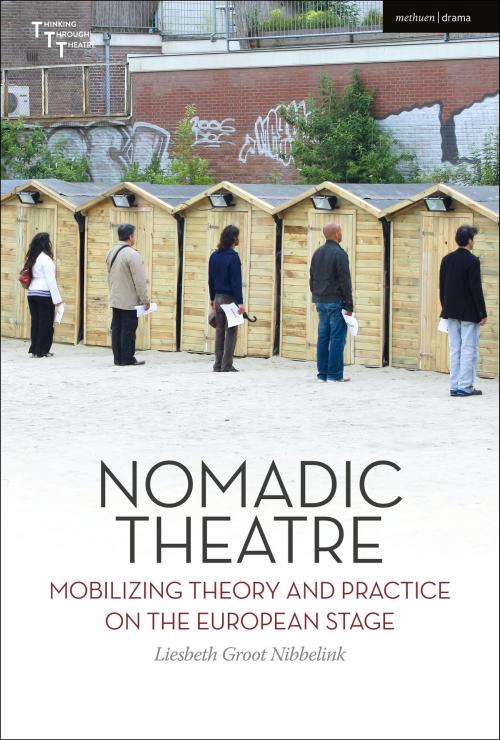Nomadic Theatre
Mobilizing Theory and Practice on the European Stage
Nonfiction, Entertainment, Theatre, Direction & Production, Performing Arts, History & Criticism| Author: | Dr Liesbeth Groot Nibbelink, Adrian Kear, Maaike Bleeker, Joe Kelleher, Professor Heike Roms | ISBN: | 9781350051041 |
| Publisher: | Bloomsbury Publishing | Publication: | April 18, 2019 |
| Imprint: | Methuen Drama | Language: | English |
| Author: | Dr Liesbeth Groot Nibbelink, Adrian Kear, Maaike Bleeker, Joe Kelleher, Professor Heike Roms |
| ISBN: | 9781350051041 |
| Publisher: | Bloomsbury Publishing |
| Publication: | April 18, 2019 |
| Imprint: | Methuen Drama |
| Language: | English |
Fluid stages, morphing theatre spaces, ambulant spectators, and occasionally disappearing performers: these are some of the key ingredients of nomadic theatre. They are also theatre's response to life in the 21st century, which is increasingly marked by the mobility of people, information, technologies and services. While examining how contemporary theatre exposes and queries this mobile turn in society, Liesbeth Groot Nibbelink introduces the concept of nomadic theatre as a vital tool for analyzing how movement and mobility affect and implicate the theatre, how this makes way for local operations and lived spaces, and how physical movements are stepping stones for theorizing mobility at large.
This book focuses on ambulatory performances and performative installations, asking how they stage movement and in turn mobilize the stage. By analyzing the work of leading European artists such as Rimini Protokoll, Dries Verhoeven, Ontroerend Goed, and Signa, Nomadic Theatre demonstrates that mobile performances radically rethink the conditions of the stage and alter our understanding of spectatorship.
Nomadic Theatre instigates connections across disciplinary fields and feeds dramaturgical analysis with insights derived from media theory, urban philosophy, cartography, architecture, and game studies. It illustrates how theatre, as a material form of thought, creatively and critically engages with mobile existence both on the stage and in society.
Fluid stages, morphing theatre spaces, ambulant spectators, and occasionally disappearing performers: these are some of the key ingredients of nomadic theatre. They are also theatre's response to life in the 21st century, which is increasingly marked by the mobility of people, information, technologies and services. While examining how contemporary theatre exposes and queries this mobile turn in society, Liesbeth Groot Nibbelink introduces the concept of nomadic theatre as a vital tool for analyzing how movement and mobility affect and implicate the theatre, how this makes way for local operations and lived spaces, and how physical movements are stepping stones for theorizing mobility at large.
This book focuses on ambulatory performances and performative installations, asking how they stage movement and in turn mobilize the stage. By analyzing the work of leading European artists such as Rimini Protokoll, Dries Verhoeven, Ontroerend Goed, and Signa, Nomadic Theatre demonstrates that mobile performances radically rethink the conditions of the stage and alter our understanding of spectatorship.
Nomadic Theatre instigates connections across disciplinary fields and feeds dramaturgical analysis with insights derived from media theory, urban philosophy, cartography, architecture, and game studies. It illustrates how theatre, as a material form of thought, creatively and critically engages with mobile existence both on the stage and in society.















